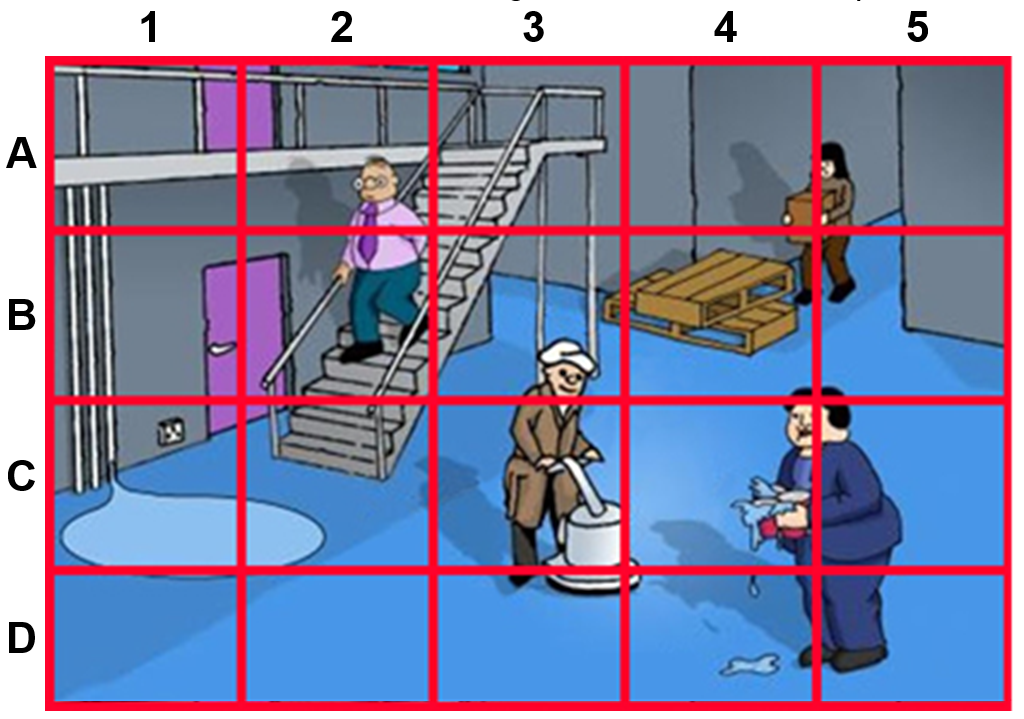Below is a small selection of Safety Awareness sample questions. Correct answers are displayed and are accompanied by a brief explanation to demonstrate the answer.
Sample Question 1
John, a forklift operator, notices that the Reversing Alert Alarm on his forklift has stopped working. He should:
Stop using the forklift immediately.
Alert his manager.
Make the beeping noise himself when reversing.
Place a sign on the forklift to prevent others from using it.
Answers 1, 2 and 4.
Answers 1, 2 and 4 are all appropriate steps to ensuring the forklift is not in use, will not be used and appropriate steps can be implemented to rectifying the fault. Making a beeping noise is not an appropriate action.
Sample Question 2
Which of the following safety messages is not depicted by the signage below?

Speed Limit.
Rotating Fan.
Slipping Hazard.
Radioactive.
Hot Surface.
The first image indicates a hot surface. The second image is a speed limit usually used where pedestrians and vehicles share common/undivided spaces. The third image indicates possible slipping hazards. The forth image indicates radioactive material.
Sample Question 3
The image below depicts a variety of hazards and has been overlaid with gridlines to create ‘boxes’. When you note a hazard, make your selection by crossing the box in which the hazard is located. Where a hazard spans over multiple boxes, select all the boxes in which the hazard is evident.
(Note – marks will be deducted for selecting a box that does not depict a hazard).

A1
A2
A3
A4
A5
B1
B2
B3
B4
B5
C1
C2
C3
C4
C5
D1
D2
D3
D4
D5
The pallets on the ground in the middle of a walkway in position D4 is a tripping hazard. The spill on the floor in position C1 and moving into C2 is a slipping hazard. The spill on the floor in position D4 is a slipping hazard. There are no other hazards in this scenario.
Sample Question 4
Sort the following list in order of severity (from least severe to most severe):
A: Death.
B: Deep laceration.
C: Twisted ankle.
D: Paper cut.
E: Coma.
Answer: D, C, B, E, A
Paper cut requiring a small band-aid and not life threatening. A twisted ankle requiring strapping and not life threatening but more serious than a paper cut. A deep laceration requiring more substantial treatment (stitches or bandages), but again not too life threatening). Coma which definitely requires hospital treatment. Death, which is the most severe outcome of a workplace incident.
Safety Awareness Information Safety Awareness Test Taking Tips Safety Awareness Practice Test
